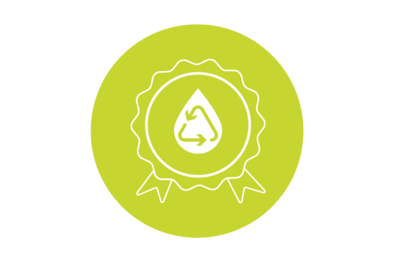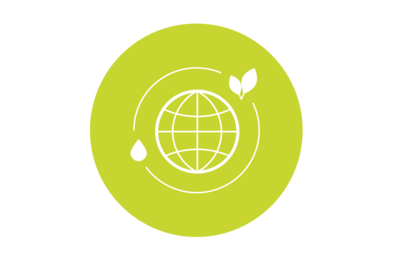Our Mission
Advantage, safety, water quality, environmental protection – these are our guiding principles for
modern wastewater management. Our mission is to establish a sustainable biological wastewater treatment.
The Future of Modern Wastewater Treatment
Every wastewater treatment plant monitors a number of routine parameters to ensure a sufficiently high purification performance. Due to a lack of methods and know-how, process analytics usually focus on chemical and biochemical parameters. Hence, measurement is basically limited to substances that are converted by wastewater bacteria or are released as intermediate or end products of their metabolism. The underlying (micro)biological processes, however, are not taken into account. Thus, the initial biological problem, which is the cause for changes in chemical parameters, can only be identified to a limited extent and, as a consequence, can only be solved to a limited extent.
The future of modern and sustainable wastewater management depends on the integration of the biocenosis into a plant’s self-control via process analytics. This is the only way to make process disturbances visible at the earliest possible point in time and to determine the cause in an efficient manner. This in turn has the effect that malfunctions do not manifest in the first place but can be prevented in time by implementing targeted measures.

Our Promise
With our expertise, an integration of systematic and direct monitoring of wastewater microorganisms into a plant’s process analytics is possible. Monitoring the biocenosis eliminates uncertainties, facilitates targeted actions and promotes long-term process optimization.

Advantage
- Analytical advantage thanks to our expertise and VIT® technology, which enables direct detection and identification, visualization and quantification of all living microorganisms in wastewater
- Cost & resource efficiency thanks to targeted, efficient, and therefore minimal and environment-friendly use of: flocculants, precipitants, nutrients and other water chemicals (additives for water treatment and the treatment of cooling water and wastewater)
- Energy efficiency thanks to reduced electric power consumption and emissions (greenhouse gases/carbon dioxide)

Safety
- Quality assurance thanks to a plant’s self-control that includes systematic and continuous collection and evaluation of data and a process optimization that take the real biocenosis into account
- Improved decision-making thanks to a clearer identification of causes
- Reliability and optimal efficiency implemented measures

Water Quality
- Excellent purification performance
- Long-term process optimization
- Improved effluent values
- Improved water quality: analysis and evaluation of data for the optimization of processes, optimization of the biocenosis and, as a consequence, optimization of the plant’s purification efficiency.

Environmental Protection
- Water protection within the framework of national, EU and international regulations
- Sustainable water management and management of water resources that minimizes the impact on ecosystems and the quality of life of residents and employees
- Commitment to people and the environment
Why should a plant’s biology be monitored?
As it was not possible to gain insight into the microbial biocenosis for a long time due to a lack of methods, analytical self-monitoring in biological wastewater treatment used to be almost completely focused on chemical parameters, also known as secondary parameters. Secondary parameters are, for example, substances that are produced by the bacteria and can subsequently be measured or substances that are required by the bacteria. In this approach, the entire bacterial biocenosis is treated as a “black box” that is impossible to examine. However, thanks to VIT® GENE PROBE TECHNOLOGY, the biology of wastewater treatment plants is no longer a “black box”!
For this reason, the integration of a direct systematic monitoring of microorganisms facilitates targeted interventions and provides information about the effectiveness of implemented measures. An actual improvement of the current water quality can be ensured.

Your benefits
successful prevention of disturbances
optimized economic efficiency (resources, costs, energy)
lasting improvement of effluent values
active environmental protection
analytical edge for water and wastewater management